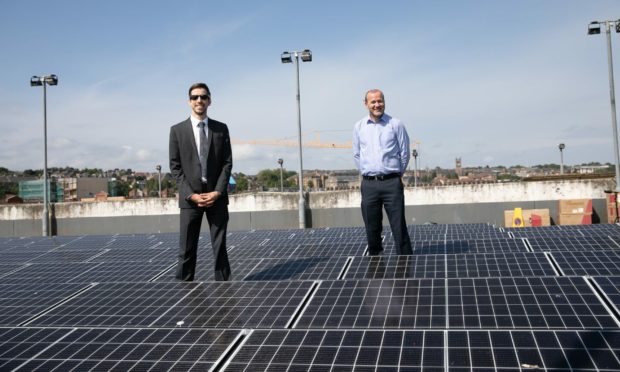The huge scale of the climate challenge facing Dundonians has been revealed via an interactive online tool.
Dundee has become the first local authority in Scotland to publish a website charting the city’s plan to slash emissions as Scotland heads towards Net Zero in 2045.
Council bosses say Dundee’s Emissions Dashboard will show how many people in the city need to stop driving petrol cars and make the switch to EVs.
Or it could help suggest how many buildings workers will need to retrofit to control energy consumption in the city.
Net Zero is the point where we balance the carbon emissions put into the atmosphere with those removed. The Scottish Government has pledged to hit that target by 2045.
‘The time to act is now’
The dashboard allows citizens and members of the public to follow that journey. It also lets people monitor the effectiveness of work done in the city to cut carbon.
Council leader John Alexander said climate change is one of the biggest challenges “to life as we know it”.
“The time to act is now. We must all change and help stop the damage we are doing to our planet,” he added.
The plan showed the city emitted 840 kilotons (kt) of carbon in 2020. The 2045 goal is to emit less than half of that – 375 kt.
A total of 30% of the 2020 emissions in the city come from buildings – 14% from homes and 16% from businesses.
Transport makes up 28% of the 2020 total while the energy system is responsible for 15% of Dundee’s carbon emissions.
Industry makes up less than 1% of the total and waste around 2%, the tool shows.
Undefined ‘unaddressed emissions’ make up roughly the last quarter.
The unaddressed emissions are those that require new actions and interventions to tackle them. Officials are working with stakeholders across the city to tackle them. They represent a current gap in emissions reduction plans.
Dundee Emissions Dashboard will ‘speed up’ green moves
Council bosses say the dashboard will help to “streamline planning, develop citywide action plans and speed up moves to replace high-carbon activities with green alternatives”.
It models the impact of dozens of low or zero carbon transitions across a range of sectors. Officials list 26 policies and commitments as part of the tool.
The data lets city officials – and residents – identify essential behaviour changes and to judge how extensive they should be.
The Dundee Emissions Dashboard is constantly updated, showcasing in real time progress towards reaching Net Zero by 2045.
In 2019, Dundee declared a climate emergency, recognising the serious and accelerating environmental, social and economic challenges faced by climate change.
Mr Alexander added: “We are already making real progress in reducing our carbon footprint. We are leading the electric car revolution and are working with partners to deliver more sustainable transport options in the city.
“The launch of the dashboard is another significant development.”











Conversation